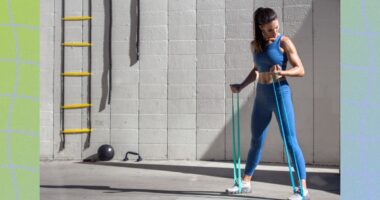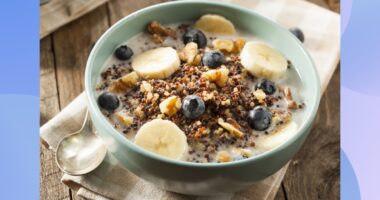
National Sunscreen Day: The different types of sunscreen and how to choose the right one for your skin type and activity level.
Using sunscreen is an essential step in any skincare regimen, as it shields the skin from harmful ultraviolet (UV) rays emitted by the sun. Neglecting to apply sunscreen regularly can result in lasting damage to the skin that may be challenging to remedy. Therefore, incorporating sunscreen into your daily skincare routine is vital, even if you have acne-prone skin. Every year, May 27 is celebrated as National Sunscreen Day to promote the use of sunscreen among people to protect their skin from the harmful effects of the sun’s UV rays.
However, choosing the right sunscreen can be tricky given the wide variety of types and brands available in the market. Using the wrong sunscreen can leave your skin feeling oily, sticky, or irritated, while also failing to provide adequate protection. To ensure that you receive the right level of protection for your skin type and individual needs, it is crucial to take the time to find the perfect sunscreen product.
Here, Dr. Sarika Holmukhe, Consulting Dermatologist at DR. SKINN CLINIC, Mumbai, shares a few things that one needs to consider before buying a sunscreen.
How to Select the Right Type of Sunscreen?
When selecting a sunscreen, it is crucial to take into account any allergic reactions you may have to particular components, its overall safety, and potential harmful effects. Additionally, it is important to ensure that the ingredients in the sunscreen do not interfere with the balance of your hormones.
Examine the Active Ingredients
Examine the active ingredients listed in the sunscreen product. Seek out formulations that include titanium dioxide, zinc oxide, and avobenzone. Also, be cautious of sunscreens that contain vitamin A, commonly referred to as retinyl palmitate. Research suggests that vitamin A may potentially accelerate the development of skin tumors.
Take into Account SPF Levels
SPF plays a vital role as it indicates the extent to which the sunscreen can filter out UVB light. Employing sunscreen with an SPF of 15 or higher is essential for safeguarding yourself against daily exposure to UV rays.
Nevertheless, it is generally advised by dermatologists to opt for an SPF of 30 or higher since it provides a higher level of protection by blocking approximately 97 percent of UVB rays. Comparatively, SPF 15 may only block around 93 percent of UV rays.
Select a Broad-Spectrum Sunscreen
Opt for a sunscreen that provides broad-spectrum coverage, safeguarding against both UVA and UVB rays. Aim for an SPF range between 30 and 50, as this will offer enhanced protection against sunburn and sun damage. Furthermore, it effectively helps prevent UVA radiation from penetrating the skin.
It is advisable to exercise caution when considering products with excessively high SPF values (over 50). These products are often believed to provide negligible additional benefits while being more expensive.
READ RELATED: 6 Fast Food Chains That Serve the Best Ice Cream Sundaes
Oily or Acne Prone Skin
Finding the right sunscreen is crucial for oily or acne-prone skin. Look for a sunscreen specifically formulated to suit your needs, such as a lightweight, oil-free, and non-comedogenic option. It’s important not to skip sunscreen, as the sun’s harmful UV rays can worsen acne and contribute to issues like hyperpigmentation, scarring, and premature aging. Additionally, sun damage can lead to inflammation and irritation, further aggravating existing acne.
Dry or Sensitive Skin
For individuals with dry or sensitive skin, it’s important to choose a sunscreen that provides both sun protection and hydration. Opt for a moisturizing sunscreen that incorporates ingredients like hyaluronic acid, glycerin, or ceramides. These components help retain moisture and nourish the skin.
To prevent potential irritation, select sunscreen products that are fragrance-free and hypoallergenic. These formulations are designed to minimize the risk of adverse reactions and ensure gentle care for sensitive skin types.
Type of Sunscreen: Gel, Stick, Lotion or Spray
When it comes to the type of sunscreen (spray, lotion, stick, or gel), the best choice depends on personal preference. Sunscreens are available in various forms, including creams, lotions, gels, sprays, sticks, and other unique formulations. Ultimately, the most effective sunscreen is the one that you will consistently use.
Regardless of the sunscreen type, proper application is crucial for its effectiveness. It is recommended to apply approximately one ounce (equivalent to the volume of a shot glass or the size of a golf ball) to cover all exposed skin. For the face, a nickel-sized dollop is usually sufficient. Remember to reapply sunscreen every two hours or immediately after heavy sweating or swimming.
If you only have a spray sunscreen and need to reapply it to your face, spray it onto your hands first and then apply it evenly using your fingers. This method ensures a more even distribution of sunscreen on the facial skin.
Conclusion
By selecting the sunscreen type that suits your preference and following the recommended guidelines, you can maximize sun protection and help maintain the health of your skin, concludes Dr. Holmukhe.
Total Wellness is now just a click away.
Follow us on
window.addEventListener(‘load’, (event) => {
// $(document).ready(function(){
$(‘#commentbtn’).on(“click”,function(){
(function(d, s, id) { var js, fjs = d.getElementsByTagName(s)[0]; if (d.getElementById(id)) return; js = d.createElement(s); js.id = id; js.src = “//connect.facebook.net/en_US/sdk.js#xfbml=1&version=v2.3”; fjs.parentNode.insertBefore(js, fjs);}(document, ‘script’, ‘facebook-jssdk’));
$(“.cmntbox”).toggle();
});
// });
});








